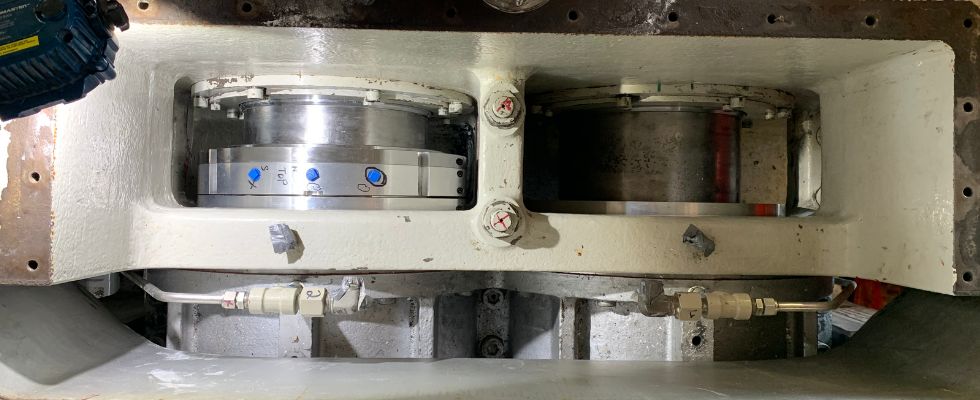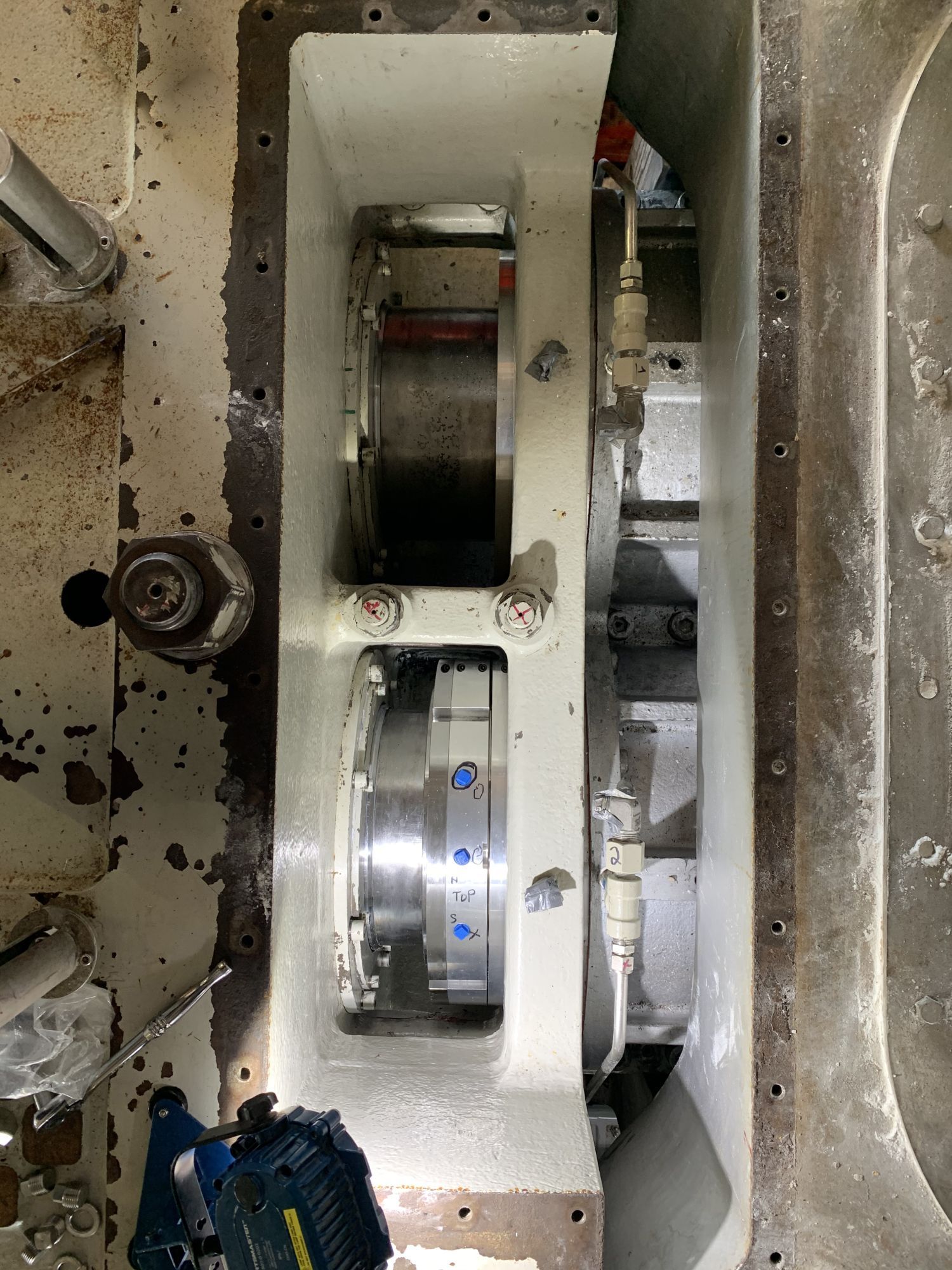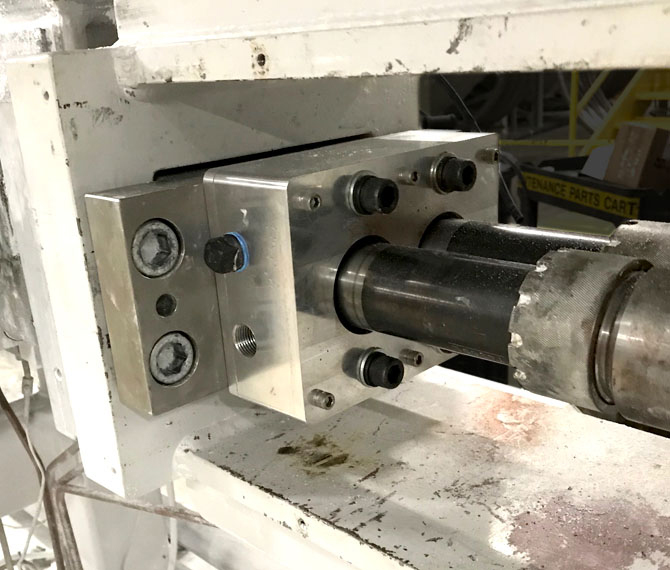
Chemical processing plants play a vital role in the global economy. They provide the raw materials used to manufacture many products that enhance our daily lives, such as medications and polymers. Plant processes are complex and vary from one facility to the next, but at the heart of many chemical plants is the extruding process. During this process, single or twin-screw extruders heat and compress process materials, such as fine powders or granulates, to form a homogenous mixture. Then, this mixture is shaped and cooled to produce materials used in the production of resins, polymers and additives.
Not only are extruders large, sometimes measuring 10 to 20 feet long, but they can be expensive to purchase, operate and maintain. As a result, ensuring they run efficiently is crucial for overall plant profitability. A key element of maintaining high-performing operations in the extruding process is minimizing product leakage. Maintaining a reliable seal on this equipment can be challenging for a variety of reasons. This article explores the costs of ineffective extruder sealing, the challenges to sealing properly and the technologies that can be deployed to better support sealing integrity.

Sealing Challenges
Effective sealing is crucial for the proper functioning of processing equipment, including extruders. When materials leak from the extruding process, it can lead to various problems that are both expensive and unsafe. First, product leakage may create a housekeeping concern because the powder that reaches the atmosphere will eventually settle somewhere and require cleaning. It may also make surfaces more slippery or cause dust that is potentially harmful if inhaled.
Some leaks can become so severe that the entire process may need to be shut down to replace the shaft seals or repair the shaft, which is costly to operators. Production stoppage costs alone are extreme. Since extruders are so large and require huge seals, replacement costs can be high due to requiring extensive man hours and likely the use of heavy machinery. While effective sealing technology can be expensive, those costs are justified by mitigating the high costs of downtime caused by failed seals.
Although effective sealing is critical to profitable operations, it is not an easy task. To start, fine powders are difficult to contain and will exploit any gap or leak path. Therefore, maintaining an airtight seal to the shaft is critical. Next, seals must be built to accommodate the severe shaft movement common in these applications. Radial runout, angular misalignment and axial movement can be quite violent, often measuring up to a quarter-inch.
Finally, a twin-shaft extruder’s design causes another challenging problem. The shafts run parallel in close proximity to each other down the length of the machine, making it difficult to find seals that fit this space. Due to these unique geometries, seals must be custom designed for the application with very tight tolerances to work well in the application.

Sealing Options
Choosing a seal design that can accommodate the challenges of twin-shaft extruders is critical and made more complicated by the numerous options available on the market. Typically, contact-type seals—such as mechanical seals, mechanical packing and lip seals—are used. However, these seals face similar challenges in achieving airtight sealing.
First, their contact-based technology makes them more prone to friction, wear and replacement. Moreover, volatile shaft movements common in the application expedite wear and can cause more immediate failure, leading to product escape and contamination. Another issue is residual powder clogging the contact seals. When the twin-shaft extruder is offline, the powder can remain in the shaft and build up on the seals. If operators do not clean the seals with nitrogen, the excess powder may eventually lead to failure. Although mechanical packing performs better than lip seals, it is susceptible to axial movement, radial run-out and angular misalignment common in twin-shaft extruders. With mechanical seals, expensive support and lubrication systems are required. This makes extruder applications problematic for mechanical seals, as they typically are very violent during startup with radial movements up to .250 inches with severe angular movements that may continue for one to five minutes until the shafts stabilize.
The drawbacks of these seal designs are linked to a common feature across all of them: they are contact-based technology. Conventional contact seals falter in twin-shaft extruders because they rely on dynamic mechanical contact to create the seal. Shaft movement and misalignment overtly stress contact points, causing seals to wear out prematurely. This results in higher production costs, increased maintenance, environmental concerns and unsafe working conditions.
Moving to Noncontact
The alternative to contact sealing methods is noncontact sealing, which does not rely on any contact with the shaft to create a positive seal. These seals use air or inert gas to create a positive purge along the shaft, preventing contamination from entering and product from escaping, and are not affected by residual powders. Only a small amount of air is needed to maintain a pressure slightly above product pressures. The air is controlled by tight tolerances to the shaft and external airflow bushings. These seals allow gas or nitrogen to flow through them, better eliminating product buildup and maintaining the seal’s cleanliness throughout its life cycle. Since they have no contact with the shaft, these seals are non-wearing and permanent, reducing the need for costly maintenance, excessive downtime and replacement.
When selecting a noncontact seal for extruder applications, it can be helpful to select one that is designed to articulate, or adjust, to the aggressive shaft movements. Doing so will reduce the effects of radial runout, axial movement and angular misalignment while maintaining a positive seal in extreme conditions. Some noncontact seals can be designed for single- or twin-shaft arrangements and to fit into compact spaces.
Twin-shaft extruders are fundamental workhorses in the chemical processing industry. However, these machines can operate at maximum efficiency only with effective product sealing. Noncontact, fully articulating air seals help ensure extruders in chemical plants function to their highest potential. This technology is designed to help retain the product inside the vessel, minimizing the risk of leakage and reducing costs. They are designed to handle the challenging demands of twin-shaft extruders, helping ensure chemical plants can operate uninterrupted for longer.


